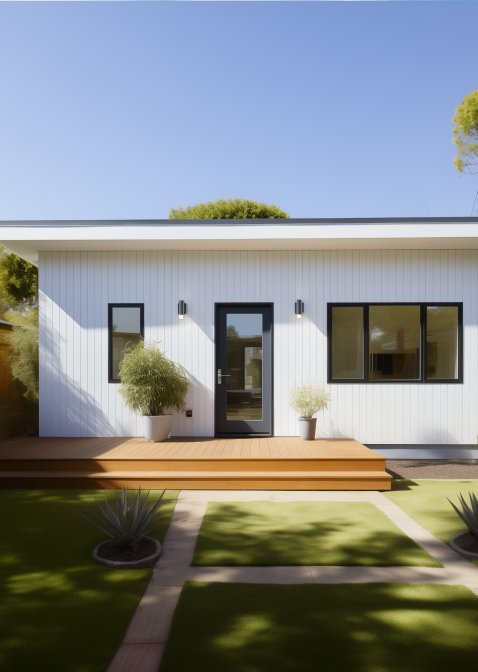There is nothing more important than family. This phrase can be found in popular films, world book bestsellers, in speeches of politicians, businessmen, or philosophers. However, sometimes family members cannot spend time together as they are separated by thousands of miles. Endless visits to guests do not solve the problem, especially if we are talking about age-related relatives who cannot travel long distances.
Fortunately, the modern construction industry offers a solution that everyone will like, namely, the construction of ADU. This is an autonomous residential unit, which is located on the same territory as the main house and can be attached to it or stand separately. It is equipped with all basic life support systems and additional amenities. When expanding a family or moving relatives, ADU will become an ideal home for everyone.
In this review, we will talk about practical tips that will allow you to create an ADU for multigenerational living, as well as share useful insiders about the advantages of such a project, in addition to the obvious reasons.
Creating an ADU for multigenerational living needs to be approached responsibly because the level of comfort and coziness depends on the quality of the analysis.
Before you start planning your ADU, it is important to consider your family’s needs. Think about who will be living in the space and what they will need. Will you need a full kitchen or just a kitchenette? How many bedrooms and bathrooms will you require? Will the space be used year-round or just for occasional visits? By answering these questions, you can start to create a plan that will meet the unique needs of your family.
Building an ADU is subject to local regulations and zoning codes, so it is crucial to check with your local government to ensure that you are allowed to build one. Some areas have restrictions on the size, height, and location of ADUs. Additionally, some areas require that the primary residence be owner-occupied, so you may not be able to rent out the ADU. Understanding the regulations and requirements in your area will help you avoid costly mistakes and ensure that your ADU is legal and safe.
There are many different types of ADUs, from tiny homes to garage conversions. When choosing a design, consider your family’s needs, your budget, and the available space on your property. A small studio may be sufficient for occasional guests, while a larger unit with a full kitchen and multiple bedrooms may be necessary for full-time living. Working with a professional designer or architect can help you create a functional and attractive space that meets your family’s needs.
If you plan to have elderly or disabled family members living in the ADU, it is essential to consider accessibility when designing the space. This may include features such as wider doorways, grab bars in the bathroom, and a ramp or lift for wheelchair access. By incorporating these features into the design, you can ensure that your ADU is safe and comfortable for all members of your family.
While living close to family can be a great way to stay connected, it is also important to respect each other’s privacy. When designing the ADU, consider ways to create a separate entrance and living space that allows for privacy and independence. This may include adding soundproofing insulation, equipping separate HVAC systems, and creating a private outdoor space.
Because an ADU is a long-term investment, it is important to choose durable materials that will stand up to years of use. This may include high-quality flooring, wear resistant countertops, and energy-efficient appliances. By selecting quality materials, you can reduce maintenance costs and ensure that your ADU remains in good condition for years to come.
Building an ADU can be a significant expense, so it is essential to create a budget and stick to it. When forming your funds, consider all of the costs associated with the project, including design fees, permits, construction costs, and furnishings. Be sure to include a contingency fund for unexpected expenses, such as structural issues or delays in construction.
On the whole, if you will follow all these tips, then you will be able to create the most comfortable living space for relatives of all ages, while not spending a lot of physical and emotional effort.
In addition to the obvious advantage of multigenerational living, namely, that elderly relatives will live next to you in complete safety, this type of housing has several other equally promising benefits.
Now you can familiarize yourself with such opportunities:
All in all, as you can see, investing in multigenerational living is a guaranteed payback solution that will not only improve the quality of life for each family member but also bring you material well-being to a new level. On par with this, if you choose to build this type of ADU in cooperation with the general contractor, then you have a chance to save money on construction, which is also important from the point of view of budget formation.











